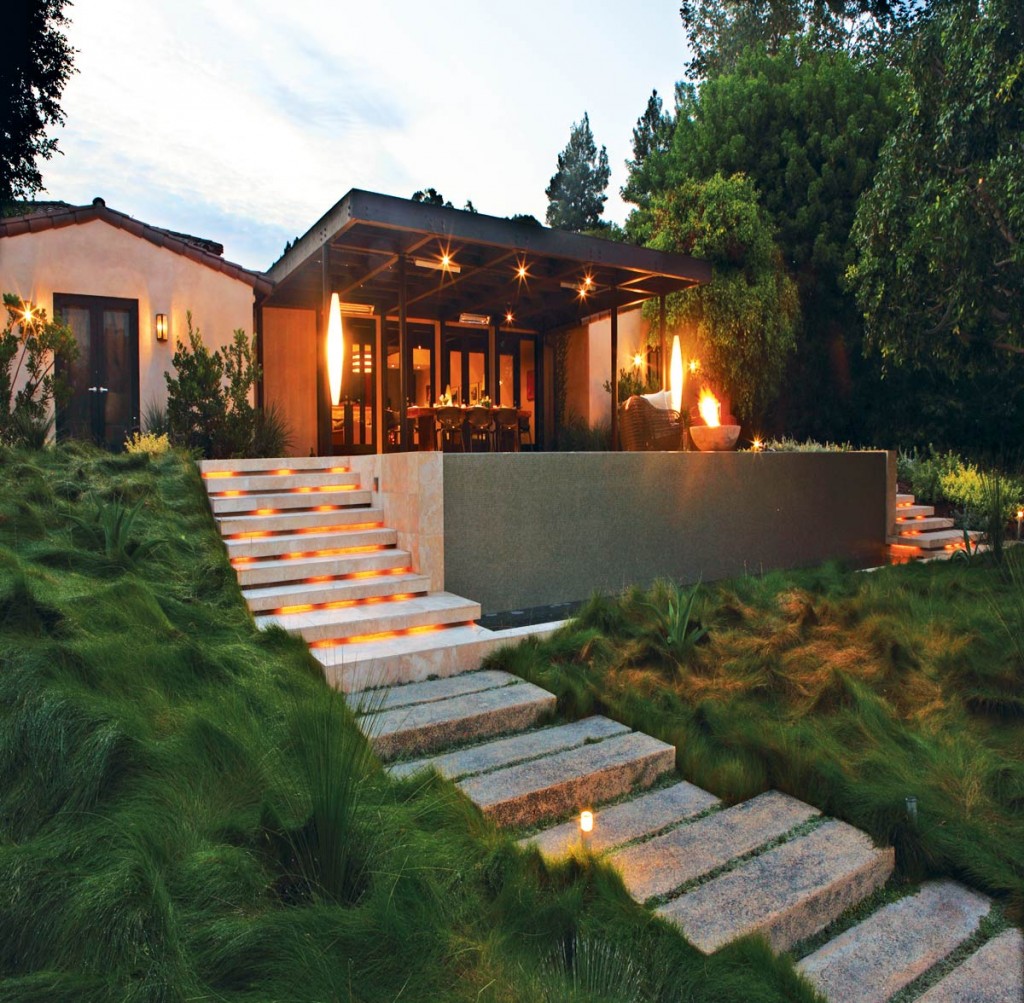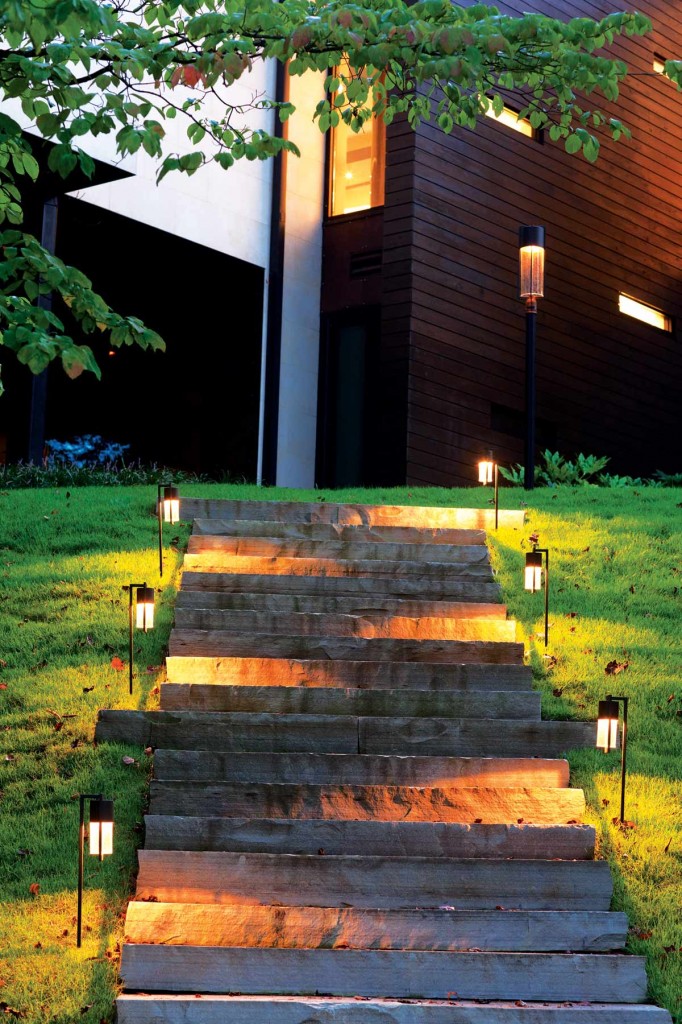Connecting your backyard to the beach—and all points in between.
Just like Dorothy’s yellow brick road to Oz, a path can be as much about style as it is about function. For ocean homes, paths can be a way to visually connect a house to its yard, provide a way straight to the beach, or simply act as an aesthetic touch that coils through the property.
But the path itself is not nearly enough. It must have a supporting cast—from shrubbery to flowers—to really give it star quality. Cassy Aoyagi, president and co-founder of FormLA Landscaping, sees the important dual role that a path plays. “Pathways really work and look their best when their design evokes their destination,” Aoyagi says. “A direct path to the ocean has an inherent draw for longer or more winding paths. Placing visual queues or focal points will give energy to travelers, inspiring them along their way. Scent and sound can also serve this purpose.” Aoyagi points to fragrant foliage or the gurgle of a fountain to create curiosity and beg delight.
Los Angeles-based celebrity interior designer and HGTV contributor Nicole Sassaman is in accord with Aoyagi: A path should be more than just a path. “Nothing should stay just a walkway,” she says. “You want to create that style [using] potted plants, sculptural metals, swinging gates. It builds curiosity.”
Martin Horner, principal of the Chicago architectural and design firm Soucie Horner, has designed paths for an assortment of oceanfront homes. Like Aoyagi and Sassaman, Horner believes that a great path sets the stage for a backyard, giving it that added oomph. “A path adds that sense of intrigue,” Hornersays, adding that it is more than just a “visual point of reference.” However, Horner also maintains that visually, a path should have a designated end, and a well-placed gate is a great way of achieving that. “The human condition is that we walk to a gate. It looks good and marks [the end of the path],” he says.
These designers agree that materials also play a big role in designing paths, decks, and patios, and they should take cues from not only the house, but the immediate surroundings. While Sassaman is a proponent of stone—“it stands up better against salt,” she says—Aoyagi says to go with wood, all the way. “Wood decking or boardwalk-looking material is really fitting and weathers nicely on the coast,” she says.
Then there is lighting, whose role can never be overstated. “Effective lighting can change everything,” Aoyagi says. Contiguous to the path, Sassaman loves the idea of overhanging lights—dropping long tendon lights down, or a series of Asian-style lamps.
“Lighting plays a delightful role when it comes to how we understand and dwell in a space,” Aoyagi explains. “Strategic lighting extends our very understanding of the space—in and outside of the home. From the inside, it stretches our eyes out of doors, creating the sense of greater space indoors. It also really draws you outdoors. It facilitates a seamless indoor-outdoor engagement.” Keeping these key factors in mind, you’ll be on the right—and beautifully designed—path.
THE GET
Hinkley Lighting’s Outdoor Shelter Path Lights
From Hinkley Lighting’s Landscape collection, its Shelter line comprises solid aluminum construction designs with clear seedy glass that creates a dramatic statement for low-voltage landscape lighting. Pieces are available in Buckeye Bronze or Hematite finishes with coordinating outdoor lantern collections. From $269.




